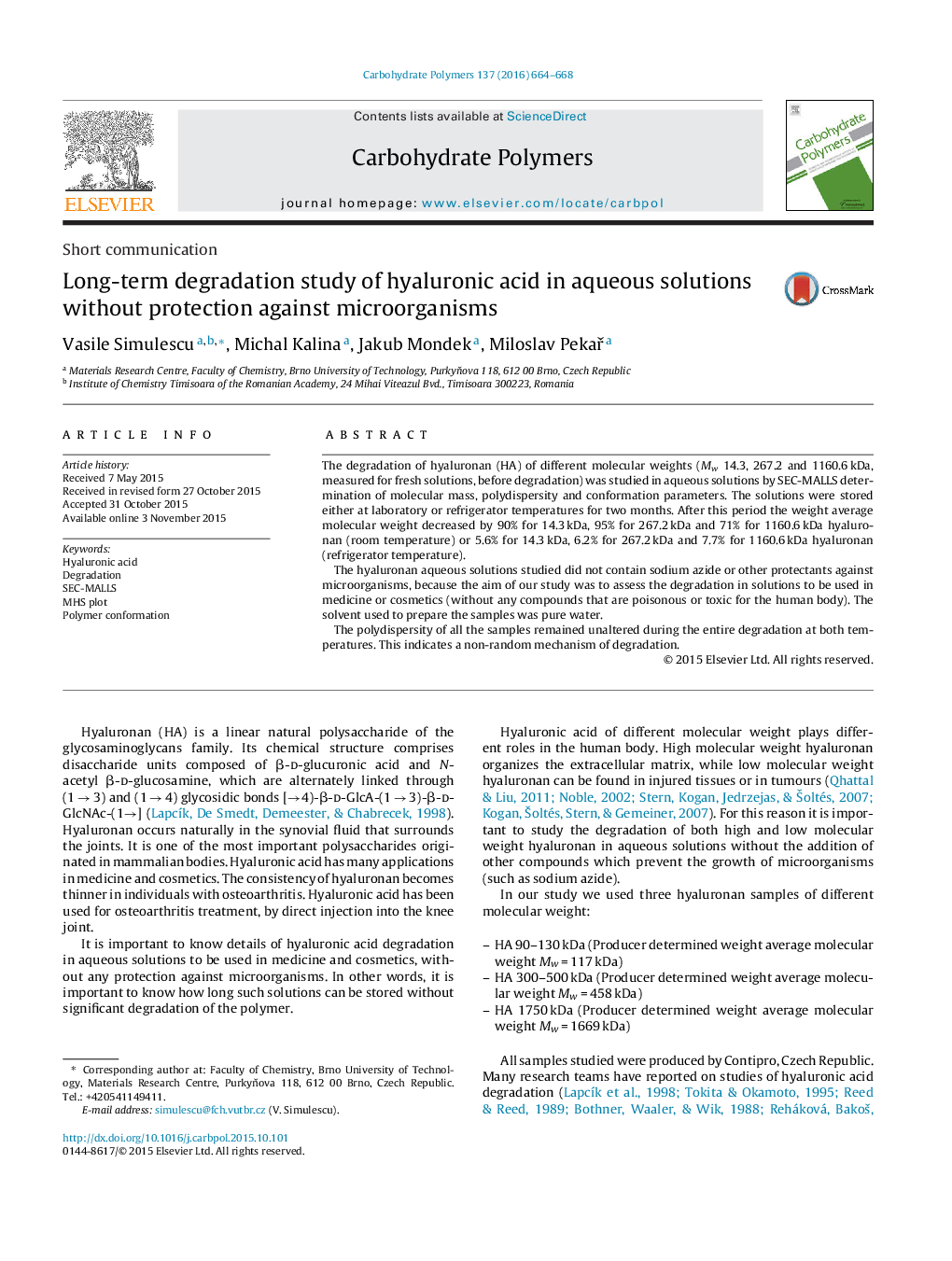| Article ID | Journal | Published Year | Pages | File Type |
|---|---|---|---|---|
| 1383212 | Carbohydrate Polymers | 2016 | 5 Pages |
•The degradation of hyaluronic acid samples was studied by using SEC-MALLS method.•The degradation at room temperature did not occur during first 8 or 11 days, but after this period of time, the microorganisms were developed enough to degrade hyaluronan very fast.•In the fridge, the hyaluronan samples were very stable to degradation even after 60 days of storage (molar mass loss of just 5–8%).•The random coil conformation was confirmed for HA 1750 kDa sample during whole degradation process, as well as for HA 300–500 kDa sample fresh solution, stored in the fridge or degraded at room temperature, but only up to 8 days.•For more degraded HA 300–500 kDa sample and for HA 90–130 kDa the conformation obtained from Mark–Howink–Sakurada plots was between random coil and rod, because those polymers are already too short to form a random coil conformation.
The degradation of hyaluronan (HA) of different molecular weights (Mw 14.3, 267.2 and 1160.6 kDa, measured for fresh solutions, before degradation) was studied in aqueous solutions by SEC-MALLS determination of molecular mass, polydispersity and conformation parameters. The solutions were stored either at laboratory or refrigerator temperatures for two months. After this period the weight average molecular weight decreased by 90% for 14.3 kDa, 95% for 267.2 kDa and 71% for 1160.6 kDa hyaluronan (room temperature) or 5.6% for 14.3 kDa, 6.2% for 267.2 kDa and 7.7% for 1160.6 kDa hyaluronan (refrigerator temperature).The hyaluronan aqueous solutions studied did not contain sodium azide or other protectants against microorganisms, because the aim of our study was to assess the degradation in solutions to be used in medicine or cosmetics (without any compounds that are poisonous or toxic for the human body). The solvent used to prepare the samples was pure water.The polydispersity of all the samples remained unaltered during the entire degradation at both temperatures. This indicates a non-random mechanism of degradation.
